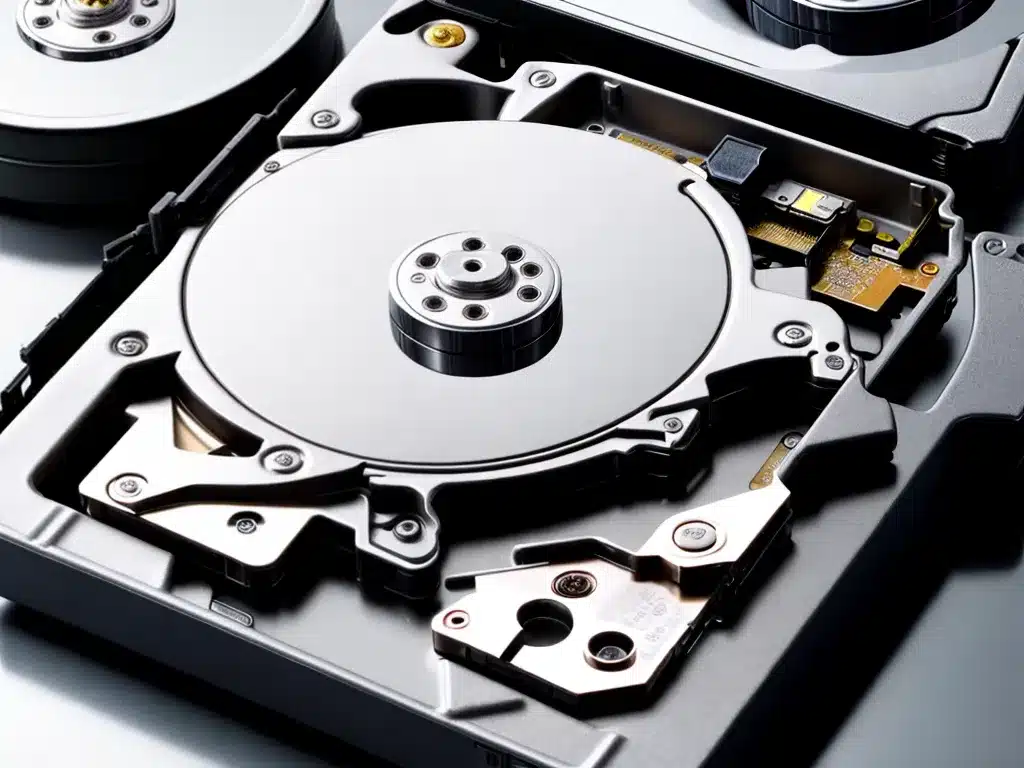
What is an SSD?
An SSD (Solid State Drive) is a type of computer storage device that uses flash memory instead of a spinning platter like a traditional hard disk drive (HDD). SSDs have no moving parts, making them faster, quieter, and less prone to failure than HDDs.
Some key advantages of SSDs over HDDs:
-
Speed – SSDs are much faster than HDDs, with typical read/write speeds of 500+ MB/s compared to 80-160 MB/s for HDDs. This makes booting, loading, and file transfers much quicker.
-
Durability – With no moving parts, SSDs are less likely to fail due to shock or vibration. They also draw less power, run cooler, and make no noise.
-
Size – SSDs come in the same standard drive sizes as HDDs but are lighter and can be manufactured in thinner, more compact form factors.
-
Reliability – The lack of moving parts means SSDs are less prone to mechanical failure over time. Their failure rate is roughly 2.0% per year vs. 7-15% for HDDs.
Some downsides:
-
Cost – SSDs are more expensive per gigabyte than HDDs. Prices have come down dramatically but HDDs remain the cheaper bulk storage option.
-
Capacity – HDDs are available in larger capacities. High capacity SSDs still come at a premium price.
-
Write limits – SSD cells can only be overwritten a finite number of times before wearing out. Newer drives offset this with wear-leveling algorithms and more write cycles.
When to upgrade from HDD to SSD
Upgrading to an SSD can provide a significant speed boost for an older system. Here are some good times to consider switching from a hard disk drive to solid state drive:
-
Your computer feels slow – An SSD will dramatically improve boot times and application load times. It’s one of the best ways to make an older computer feel faster.
-
You regularly deal with large files – The fast read/write speeds of SSDs make a huge difference when opening and saving large photos, videos, or data files.
-
You need durability and reliability – For laptops and other systems where durability is important, an SSD is much less likely to fail from drops, vibration, or extreme temperatures.
-
Noise is an issue – With no moving parts, SSDs run perfectly silent which can be a major benefit for quiet computing environments.
-
You’re building a new system – Including an SSD as the primary drive for a new build provides a responsive snappy experience right from the start. Use a traditional HDD for secondary bulk storage.
Choosing the Right SSD
Not all SSDs are created equal. When shopping for an SSD, consider:
-
Type – SATA or NVMe. NVMe is faster but more expensive. SATA is fine for most home/office use.
-
Capacity – balances your needs and budget. 250GB to 1TB is a good range for most.
-
Form factor – 2.5 inch SATA for desktops, M.2 for ultrabooks and compact PCs.
-
Controller and NAND – Look at benchmarks for speed comparisons.Aim for known brand controllers (Phison, Samsung) and quality 3D NAND chips.
-
Endurance rating – Higher TBW (terabytes written) ratings indicate a longer lifespan. Around 360TBW is excellent for a 1TB drive.
-
Warranty length – 5 years is ideal. Shorter warranties indicate cost-cutting.
Top value SSD choices include the Crucial MX500, Samsung 870 EVO, WD Blue 3D NAND, and SK hynix Gold S31. Shop end of year sales for best pricing.
Migrating Your Data to a New SSD
When switching to a new SSD, you’ll need to migrate your operating system, programs, and data files over from the old drive. Options include:
-
Fresh install – Reinstall Windows and apps on the SSD, then copy data over. Simple but time consuming.
-
Migration software – Purpose-built tools like Samsung Data Migration software clone everything to the new drive.
-
Image backup – Backup a system image to external storage, replace the drive, then restore.
-
Clean install + restore data – Reinstall Windows on the SSD but restore user folders from the HDD.
I recommend a clean install on the new SSD to start fresh, then use file copy or migration software to transfer over your personal files and folders to the new drive.
Enjoy the Speed!
The jump from HDD to SSD speeds is immediately obvious. Boot times drop from minutes to seconds. Apps and large files open instantly. The system remains fast and responsive even as it ages. With SSD prices continuing to drop, there’s never been a better time to ditch the old mechanical hard drive and enjoy a faster, smoother computing experience.












